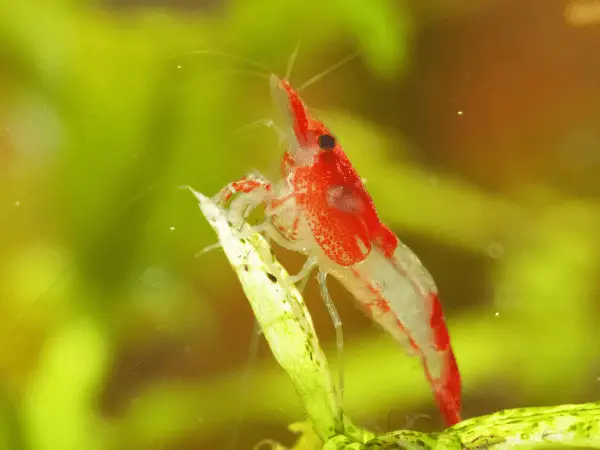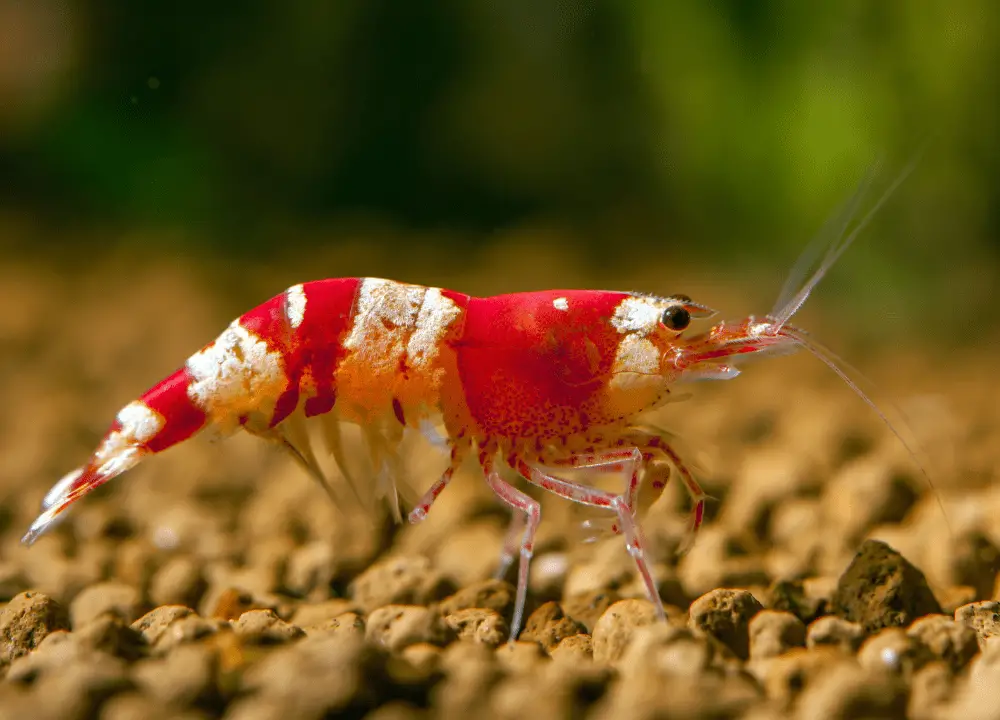Aquarium salt can be safe for shrimp if used in proper, minimal amounts. However, overuse or high concentrations pose significant risks to their health.
Shrimp in aquariums often thrive in stable, clean environments tailored to their specific needs. Aquarium enthusiasts incorporate salt to manage disease and improve gill function but must proceed with caution. Excessive salt disrupts the ionic balance crucial for shrimp’s osmoregulatory functions, leading to stress and potential fatalities.
Providing a balanced habitat, aquarists reap benefits like enhanced shrimp immunity and recovery support when treating diseases. This article delves into the delicate balance of aquarium salt usage, revealing how to maximize the benefits while mitigating risks to ensure the well-being of your aquatic crustaceans.
Understanding Shrimp
Shrimp are not just fascinating creatures, but also vital members of aquatic ecosystems. Before diving into the specifics of using aquarium salt for shrimp, it’s essential to grasp their different types and the ideal habitats they thrive in. Correct knowledge ensures the health and vitality of these delicate critters within your aquarium.
Types Of Shrimp
In the aquatic world, shrimp come in various colors and sizes. Many hobbyists favor species like Cherry Shrimp, Ghost Shrimp, and Amano Shrimp. Each type has unique care requirements. Identifying the right shrimp for your tank is the first step to creating a harmonious environment.
Here’s a simplified list of popular shrimp types:
- Cherry Shrimp: Small, colorful, and beginner-friendly.
- Ghost Shrimp: Transparent bodies, great tank cleaners.
- Amano Shrimp: Larger size, algae-eating experts.
- Bamboo Shrimp: Unique filter feeders, peaceful tank mates.
- Crystal Red Shrimp: Striking red and white patterns, require stable conditions.
Ideal Conditions For Shrimp
Shrimp are sensitive to their environment. Water quality, temperature, and pH levels are vital for their survival. Monitoring and maintaining these parameters will promote a healthy shrimp population.
The following table highlights optimal conditions:
| Parameter | Ideal Range |
|---|---|
| Temperature | 18-28°C (64-82°F) |
| pH Level | 6.5-8.0 |
| General Hardness (GH) | 4-8 dGH |
| Carbonate Hardness (KH) | 3-15 dKH |
| Ammonia/Nitrite | 0 ppm |
| Nitrate | <5-10 ppm |
Strive to mimic natural conditions. Use testing kits regularly to check water parameters. Water changes help maintain the balance. Remember, stability is key for shrimp well-being.

Aquarium Salt And Shrimp
Many shrimp keepers wonder about using aquarium salt in shrimp tanks. It is crucial to understand the benefits and risks. Salt can affect shrimp health. Knowing how can help you make wise choices for your aquatic friends.
What Is Aquarium Salt?
Aquarium salt, or sodium chloride, is not table salt. It is free from iodine and anti-caking agents. People use it in fish tanks. It can help fish with diseases. For shrimp, the case is different.
Effects Of Aquarium Salt On Shrimp
Shrimp are sensitive creatures. Their response to salt is not the same as fish. They need stable conditions. Salt changes water salinity. Too much can harm or kill shrimp.
- Water Changes: Sudden salinity shifts can stress shrimp.
- Disease Treatment: Sometimes, salt helps against parasites. It can be a careful treatment.
- Molting: Shrimp need the right minerals for their shells. Salt may affect molting processes.
Use salt with caution. Test water parameters often. Salinity should stay within the safe range for shrimp. Shrimp types may need different salt levels.
| Type of Shrimp | Safe Salinity Level |
|---|---|
| Neocaridina | Low to None |
| Caridina | Minor to Mild |
Consult experts before adding salt. Even shrimp labeled as hardy have limits. Balance is key for shrimp health.
Benefits Of Aquarium Salt
Introducing aquarium salt into a shrimp tank offers several benefits. Shrimp keepers often use it to bolster shrimp health and vitality. Let’s explore these benefits further to understand why some aquarists consider aquarium salt an essential component in shrimp care.
Promotes Healing And Prevents Diseases
Aquarium salt can aid in healing by fighting off a range of potential illnesses. Its antiseptic properties are key for preventing diseases in shrimp. Shrimp with minor injuries or infections often recover better with a little aquarium salt in their water.
- Reduces infection risk: Salt deters harmful bacteria.
- Speeds up recovery: It helps shrimp heal from wounds.
- Boosts immune systems: Shrimp become more resilient.
Creates Optimal Osmotic Balance
Ideal osmotic balance is crucial for shrimp health. Aquarium salt helps maintain the right water conditions, ensuring shrimp can regulate their internal fluids efficiently. It keeps their ecosystem stable, letting them thrive.
| Benefit | Description |
|---|---|
| Stabilizes Water | Salt helps to maintain consistent water parameters. |
| Supports Moulting | Provides electrolytes that are important for a successful moult. |
| Maintains Health | Supports overall vitality and well-being. |

Risks Of Aquarium Salt
Understanding the potential drawbacks of using aquarium salt is critical. While beneficial in some cases, certain risks exist, particularly for aquatic life such as shrimp. Let’s explore the potential hazards that aquarium salt can pose to your delicate shrimp.
Negative Impact On Sensitive Shrimp Species
Many shrimp species are sensitive to changes in their aquatic environment. Unlike their saltwater cousins, freshwater shrimp often cannot tolerate high salinity. This exposure can lead to osmotic stress, disrupting their biological functions. When salt levels rise, these creatures may experience:
- Difficulty in molting
- Stunted growth
- Decreased lifespan
Some sensitive shrimp species such as Amano, Cherry, and Ghost Shrimp, require strict water parameters to thrive. Even a small amount of aquarium salt can prove detrimental.
Overdosing And Potential Toxicity
Accidental overdosing of aquarium salt poses a real threat. An overdose affects shrimp more significantly than other aquatic inhabitants due to their size and sensitivity. Symptoms of too much salt include:
- Lethargy
- Loss of appetite
- Mortality
Maintaining proper dosages is crucial. Shrimp keepers need to monitor salt concentration diligently. Use a salinity tester to ensure levels are within a safe range for your shrimp. Always introduce salt gradually and keep a log of any adjustments, including amounts and dates.
Dosage And Application
Understanding the right dosage and application of aquarium salt can keep shrimp healthy. Getting the balance right is key. Let’s dive into how much to use and the best way to add it to your shrimp tank.
Recommended Dosage
Shrimp are sensitive to salt. It’s vital to get the dosage right:
- 1 teaspoon per 3-5 gallons of water is a general guideline.
- For preventive care, a lower dose works best.
- For treating diseases, a short-term slightly higher dose may be necessary.
Test regularly to ensure the proper salt levels.
Proper Application In Shrimp Tanks
Correct application is as important as dosage:
- Dissolve the salt in a separate container of tank water first.
- Add slowly to the main tank over several hours.
- Monitor shrimp behavior and water parameters closely.
Be sure to use salt made for aquariums, not table salt.
Frequently Asked Questions
Can Aquarium Salt Harm Shrimp Species?
Aquarium salt can be harmful to some shrimp species, especially the more delicate ones. Tolerance levels differ, so overuse or incorrect dosing can lead to dehydration and death in shrimp due to osmoregulation disruption.
What Are The Benefits Of Aquarium Salt For Shrimp?
Aquarium salt may help in treating diseases and reducing stress in shrimp. It aids in osmoregulation and can help boost the immune system of certain hardier species, providing a healthier environment when used correctly.
How Does Aquarium Salt Affect Shrimp Molting Cycle?
Improper use of aquarium salt can disrupt the molting cycle of shrimp. It alters the ionic balance in water, which can stress shrimp and lead to unsuccessful molting, potentially causing mortalities.
What’s The Safe Dosage Of Aquarium Salt For Shrimp?
The safe dosage of aquarium salt for shrimp is typically lower than for fish. Consult a professional for the exact amount, as it varies by species, but generally, a very small amount, measured in teaspoons per gallon, is applied.
Conclusion
Understanding the appropriate use of aquarium salt can greatly benefit shrimp health. Yet, it’s crucial to balance its advantages against potential risks. With proper research and dosage, aquarists can safely incorporate this tool to ensure a thriving aquatic environment for their shrimp.
Remember, moderation is key.


